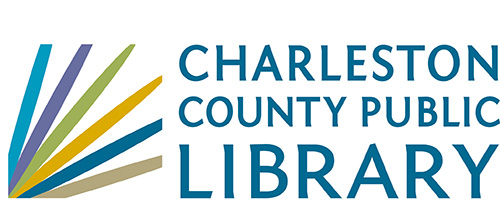Menu
×
Otranto Road Library
Temporarily Closed
Phone: (843) 572-4094
Edisto Island Library
11 a.m. - 4 p.m.
Phone: (843) 869-2355
Wando Mount Pleasant Library
9 a.m. – 8 p.m.
Phone: (843) 805-6888
West Ashley Library
9 a.m. - 7 p.m.
Phone: (843) 766-6635
Village Library
9 a.m. - 6 p.m.
Phone: (843) 884-9741
St. Paul's/Hollywood Library
9 a.m. – 8 p.m.
Phone: (843) 889-3300
Mt. Pleasant Library
9 a.m. – 8 p.m.
Phone: (843) 849-6161
McClellanville Library
9 a.m. – 6 p.m.
Phone: (843) 887-3699
Keith Summey North Charleston Library
9 a.m. – 8 p.m.
Phone: (843) 744-2489
Hurd/St. Andrews Library
9 a.m. – 8 p.m.
Phone: (843) 766-2546
Folly Beach Library
9 a.m. - 5:30 p.m.
Phone: (843) 588-2001
Dorchester Road Library
9 a.m. – 8 p.m.
Phone: (843) 552-6466
John L. Dart Library
9 a.m. – 7 p.m.
Phone: (843) 722-7550
Main Library
9 a.m. – 8 p.m.
Phone: (843) 805-6930
Bees Ferry West Ashley Library
9 a.m. – 8 p.m.
Phone: (843) 805-6892
John's Island Library
9 a.m. – 8 p.m.
Phone: (843) 559-1945
Baxter-Patrick James Island
9 a.m. – 8 p.m.
Phone: (843) 795-6679
Edgar Allan Poe/Sullivan's Island Library
Closed for renovations
Phone: (843) 883-3914
Mobile Library
9 a.m. - 5 p.m.
Phone: (843) 805-6909
Today's Hours
Otranto Road Library
Temporarily Closed
Phone: (843) 572-4094
Edisto Island Library
11 a.m. - 4 p.m.
Phone: (843) 869-2355
Wando Mount Pleasant Library
9 a.m. – 8 p.m.
Phone: (843) 805-6888
West Ashley Library
9 a.m. - 7 p.m.
Phone: (843) 766-6635
Village Library
9 a.m. - 6 p.m.
Phone: (843) 884-9741
St. Paul's/Hollywood Library
9 a.m. – 8 p.m.
Phone: (843) 889-3300
Mt. Pleasant Library
9 a.m. – 8 p.m.
Phone: (843) 849-6161
McClellanville Library
9 a.m. – 6 p.m.
Phone: (843) 887-3699
Keith Summey North Charleston Library
9 a.m. – 8 p.m.
Phone: (843) 744-2489
Hurd/St. Andrews Library
9 a.m. – 8 p.m.
Phone: (843) 766-2546
Folly Beach Library
9 a.m. - 5:30 p.m.
Phone: (843) 588-2001
Dorchester Road Library
9 a.m. – 8 p.m.
Phone: (843) 552-6466
John L. Dart Library
9 a.m. – 7 p.m.
Phone: (843) 722-7550
Main Library
9 a.m. – 8 p.m.
Phone: (843) 805-6930
Bees Ferry West Ashley Library
9 a.m. – 8 p.m.
Phone: (843) 805-6892
John's Island Library
9 a.m. – 8 p.m.
Phone: (843) 559-1945
Baxter-Patrick James Island
9 a.m. – 8 p.m.
Phone: (843) 795-6679
Edgar Allan Poe/Sullivan's Island Library
Closed for renovations
Phone: (843) 883-3914
Mobile Library
9 a.m. - 5 p.m.
Phone: (843) 805-6909
Patron Login
menu
Item request has been placed!
×
Item request cannot be made.
×
 Processing Request
Processing Request
PODXL promotes malignant progression of hepatocellular carcinoma by activating PI3K/AKT pathway.
Item request has been placed!
×
Item request cannot be made.
×
 Processing Request
Processing Request
- Author(s): Ding Y;Ding Y; Wang X; Wang X; Shu F; Shu F; Pan K; Pan K; Chen X; Chen X; Liu Q; Liu Q
- Source:
Journal of molecular histology [J Mol Histol] 2024 Dec; Vol. 55 (6), pp. 1107-1120. Date of Electronic Publication: 2024 Aug 28.- Publication Type:
Journal Article- Language:
English - Source:
- Additional Information
- Source: Publisher: Springer Netherlands Country of Publication: Netherlands NLM ID: 101193653 Publication Model: Print-Electronic Cited Medium: Internet ISSN: 1567-2387 (Electronic) Linking ISSN: 15672379 NLM ISO Abbreviation: J Mol Histol Subsets: MEDLINE
- Publication Information: Publication: Dordrecht, The Netherlands : Springer Netherlands
Original Publication: Dordrecht, The Netherlands : Kluwer Academic Publishers, 2004- - Subject Terms: Carcinoma, Hepatocellular*/pathology ; Carcinoma, Hepatocellular*/metabolism ; Carcinoma, Hepatocellular*/genetics ; Carcinoma, Hepatocellular*/mortality ; Liver Neoplasms*/pathology ; Liver Neoplasms*/metabolism ; Liver Neoplasms*/genetics ; Liver Neoplasms*/mortality ; Proto-Oncogene Proteins c-akt*/metabolism ; Phosphatidylinositol 3-Kinases*/metabolism ; Signal Transduction* ; Disease Progression* ; Cell Proliferation* ; Gene Expression Regulation, Neoplastic*; Humans ; Cell Line, Tumor ; Male ; Female ; Cell Movement/genetics ; Prognosis ; Apoptosis ; Middle Aged
- Abstract: Hepatocellular carcinoma (HCC) presents challenges due to inadequate early monitoring and diagnostic precision, resulting in rising incidence and mortality rates. Identifying reliable predictive biomarkers is imperative. This study investigates PODXL expression in HCC and its mechanisms in tumor onset and progression. Clinical samples were analyzed for PODXL expression in HCC tissues, correlating with clinical features and prognosis. In vitro experiments and bioinformatics analysis validated PODXL's role in HCC, particularly in HCCLM3 cells, highlighting its impact on proliferation, invasion, and metastasis. Enhanced PODXL expression, associated with poor prognosis, was observed in HCC tissues and cells. Downregulating PODXL reduced HCCLM3 cell proliferation, invasion, and migration, while promoting apoptosis. Bioinformatics analysis linked abnormal PODXL expression to the PI3K/AKT pathway. Moreover, PODXL downregulation and PI3K/AKT activation verified PODXL's role in promoting HCCLM3 cell progression via this pathway. This study underscores PODXL's significance in HCC prognosis and suggests its potential as a diagnostic or therapeutic target.
Competing Interests: Declarations Ethical approval This article has been reviewed and approved by the ethics board of The First Affiliated Hospital of Gannan Medical University. Competing interests The authors declare no competing interests.
(© 2024. The Author(s), under exclusive licence to Springer Nature B.V.) - References: Boman K, Larsson AH, Segersten U et al (2013) Membranous expression of podocalyxin-like protein is an independent factor of poor prognosis in urothelial bladder cancer. Br J Cancer 108:2321–2328. https://doi.org/10.1038/bjc.2013.215. (PMID: 10.1038/bjc.2013.215236523153681027)
Cao W, Chen HD, Yu YW et al (2021) Changing profiles of cancer burden worldwide and in China: a secondary analysis of the global cancer statistics 2020. Chin Med J (Engl) 134:783–791. https://doi.org/10.1097/cm9.0000000000001474. (PMID: 10.1097/cm9.000000000000147433734139)
Chen Z, Lu X, Xuan Y et al (2019) Transcriptome analysis based on a combination of sequencing platforms provides insights into leaf pigmentation in Acer rubrum. BMC Plant Biol 19:240. https://doi.org/10.1186/s12870-019-1850-7. (PMID: 10.1186/s12870-019-1850-7311709346555730)
Ding Y, Wang X, Lu S et al (2023) BCAT1, as a prognostic factor for HCC, can promote the development of liver cancer through activation of the AKT signaling pathway and EMT. J Mol Histol 54:25–39. https://doi.org/10.1007/s10735-022-10108-3. (PMID: 10.1007/s10735-022-10108-336344754)
Flores-Tellez TN, Lopez TV, Vasquez Garzon VR et al (2015) Co-expression of Ezrin-CLIC5-Podocalyxin is Associated with Migration and Invasiveness in Hepatocellular Carcinoma. PLoS ONE 10:e0131605. https://doi.org/10.1371/journal.pone.0131605. (PMID: 10.1371/journal.pone.0131605261353984489913)
Forner A, Reig M, Bruix J (2018) Hepatocellular carcinoma, Lancet. 391:1301–1314. https://doi.org/10.1016/S0140-6736(18)30010-2.
Han X, Yabroff KR, Ward E et al (2018) Comparison of insurance status and diagnosis stage among patients with newly diagnosed Cancer before vs after implementation of the Patient Protection and Affordable Care Act. JAMA Oncol 4:1713–1720. https://doi.org/10.1001/jamaoncol.2018.3467. (PMID: 10.1001/jamaoncol.2018.3467304221526440711)
Huang T, Jin X, He L et al (2013) Role of podocalyxin in astrocytoma: clinicopathological and in vitro evidence. Oncol Lett 6:1390–1396. https://doi.org/10.3892/ol.2013.1556. (PMID: 10.3892/ol.2013.1556241795303813577)
Huang R, Wu J, Zheng Z et al (2019) The Construction and Analysis of ceRNA Network and Patterns of Immune Infiltration in Mesothelioma with Bone Metastasis. Front Bioeng Biotechnol 7:257. https://doi.org/10.3389/fbioe.2019.00257. (PMID: 10.3389/fbioe.2019.00257316817396813567)
Ito T, Nguyen MH (2023) Perspectives on the underlying etiology of HCC and its effects on Treatment outcomes. J Hepatocell Carcinoma 10:413–428. https://doi.org/10.2147/jhc.S347959. (PMID: 10.2147/jhc.S3479593692605510013586)
Kaprio T, Fermer C, Hagstrom J et al (2014) Podocalyxin is a marker of poor prognosis in colorectal cancer. BMC Cancer 14:493. https://doi.org/10.1186/1471-2407-14-493. (PMID: 10.1186/1471-2407-14-493250048634226963)
Kelley TW, Huntsman D, McNagny KM et al (2005) Podocalyxin: a marker of blasts in acute leukemia. Am J Clin Pathol 124:134–142. https://doi.org/10.1309/7bhlahhu0n4mht7q. (PMID: 10.1309/7bhlahhu0n4mht7q15923169)
Koch LK, Zhou H, Ellinger J et al (2008) Stem cell marker expression in small cell lung carcinoma and developing lung tissue. Hum Pathol 39:1597–1605. https://doi.org/10.1016/j.humpath.2008.03.008. (PMID: 10.1016/j.humpath.2008.03.00818656241)
Kusumoto H, Shintani Y, Kanzaki R et al (2017) Podocalyxin influences malignant potential by controlling epithelial-mesenchymal transition in lung adenocarcinoma. Cancer Sci 108:528–535. https://doi.org/10.1111/cas.13142. (PMID: 10.1111/cas.13142280044675378270)
Laitinen A, Bockelman C, Hagstrom J et al (2015) Podocalyxin as a prognostic marker in gastric Cancer. PLoS ONE 10:e0145079. https://doi.org/10.1371/journal.pone.0145079. (PMID: 10.1371/journal.pone.0145079266747704682935)
Larsson A, Johansson ME, Wangefjord S et al (2011) Overexpression of podocalyxin-like protein is an independent factor of poor prognosis in colorectal cancer. Br J Cancer 105:666–672. https://doi.org/10.1038/bjc.2011.295. (PMID: 10.1038/bjc.2011.295218291923188928)
Lei T, Zhu X, Zhu K et al (2019) EGR1-induced upregulation of lncRNA FOXD2-AS1 promotes the progression of hepatocellular carcinoma via epigenetically silencing DKK1 and activating Wnt/β-catenin signaling pathway. Cancer Biol Ther 20:1007–1016. https://doi.org/10.1080/15384047.2019.1595276. (PMID: 10.1080/15384047.2019.1595276309295586606006)
Lv QL, Wang LC, Li DC et al (2020) Knockdown lncRNA DLEU1 inhibits gliomas progression and promotes Temozolomide Chemosensitivity by regulating Autophagy. Front Pharmacol 11:560543. https://doi.org/10.3389/fphar.2020.560543. (PMID: 10.3389/fphar.2020.560543333625377756250)
Napoli M, Li X, Ackerman HD et al (2020) Pan-cancer analysis reveals TAp63-regulated oncogenic lncRNAs that promote cancer progression through AKT activation. Nat Commun 11:5156. https://doi.org/10.1038/s41467-020-18973-w. (PMID: 10.1038/s41467-020-18973-w330569907561725)
Parker BJ, Wearsch PA, Veloo ACM et al (2020) The Genus Alistipes: gut Bacteria with emerging implications to inflammation, Cancer, and Mental Health. Front Immunol 11:906. https://doi.org/10.3389/fimmu.2020.00906. (PMID: 10.3389/fimmu.2020.00906325821437296073)
Rong Z, Luo Z, Zhang J et al (2020) GINS complex subunit 4, a prognostic biomarker and reversely mediated by Krüppel-like factor 4, promotes the growth of colorectal cancer. Cancer Sci 111:1203–1217. https://doi.org/10.1111/cas.14341. (PMID: 10.1111/cas.14341320123897156840)
Schopperle WM, Kershaw DB, DeWolf WC (2003) Human embryonal carcinoma tumor antigen, Gp200/GCTM-2, is podocalyxin. Biochem Biophys Res Commun 300:285–290. https://doi.org/10.1016/s0006-291x(02)02844-9. (PMID: 10.1016/s0006-291x(02)02844-912504081)
Somasiri A, Nielsen JS, Makretsov N et al (2004) Overexpression of the anti-adhesin podocalyxin is an independent predictor of breast cancer progression. Cancer Res 64:5068–5073. https://doi.org/10.1158/0008-5472.Can-04-0240. (PMID: 10.1158/0008-5472.Can-04-024015289306)
Sung H, Ferlay J, Siegel RL et al (2021) Global Cancer statistics 2020: GLOBOCAN estimates of incidence and Mortality Worldwide for 36 cancers in 185 countries. CA Cancer J Clin 71:209–249. https://doi.org/10.3322/caac.21660. (PMID: 10.3322/caac.2166033538338)
Tamayo-Orbegozo E, Amo L, Riñón M et al (2017) Podocalyxin promotes proliferation and survival in mature B-cell non-hodgkin lymphoma cells. Oncotarget 8:99722–99739. https://doi.org/10.18632/oncotarget.21283. (PMID: 10.18632/oncotarget.21283292459365725127)
Tang F, Gao R, Jeevan-Raj B et al (2019) LATS1 but not LATS2 represses autophagy by a kinase-independent scaffold function. Nat Commun 10:5755. https://doi.org/10.1038/s41467-019-13591-7. (PMID: 10.1038/s41467-019-13591-7318483406917744)
Taniuchi K, Furihata M, Naganuma S et al (2016) Podocalyxin-like protein, linked to poor prognosis of pancreatic cancers, promotes cell invasion by binding to gelsolin. Cancer Sci 107:1430–1442. https://doi.org/10.1111/cas.13018. (PMID: 10.1111/cas.13018274612785084665)
Taniuchi K, Tsuboi M, Sakaguchi M et al (2018) Measurement of serum PODXL concentration for detection of pancreatic cancer. Onco Targets Ther 11:1433–1445. https://doi.org/10.2147/ott.S155367. (PMID: 10.2147/ott.S155367295885985858829)
Townshend RF, Shao Y, Wang S et al (2020) Effect of cell spreading on rosette formation by human pluripotent stem cell-derived neural progenitor cells. Front Cell Dev Biol 8:588941. https://doi.org/10.3389/fcell.2020.588941. (PMID: 10.3389/fcell.2020.588941331787017593581)
Wang HY, Wang YP, Zeng X et al (2020) Circular RNA is a popular molecule in tumors of the digestive system (review). Int J Oncol 57:21–42. https://doi.org/10.3892/ijo.2020.5054. (PMID: 10.3892/ijo.2020.5054323777367252451)
Wu T, Hu E, Xu S et al (2021) clusterProfiler 4.0: a universal enrichment tool for interpreting omics data. Innov (Camb) 2(100141). https://doi.org/10.1016/j.xinn.2021.100141.
Xu HY, Li N, Yao N et al (2019) CD8 + T cells stimulated by exosomes derived from RenCa cells mediate specific immune responses through the FasL/Fas signaling pathway and, combined with GM–CSF and IL–12, enhance the anti–renal cortical adenocarcinoma effect. Oncol Rep 42:866–879. https://doi.org/10.3892/or.2019.7208. (PMID: 10.3892/or.2019.720831233203)
Zhang J, Zhu Z, Wu H et al (2019) PODXL, negatively regulated by KLF4, promotes the EMT and metastasis and serves as a novel prognostic indicator of gastric cancer. Gastric Cancer 22:48–59. https://doi.org/10.1007/s10120-018-0833-y. (PMID: 10.1007/s10120-018-0833-y29748877)
Zhi Q, Chen H, Liu F et al (2019) Podocalyxin-like protein promotes gastric cancer progression through interacting with RUN and FYVE domain containing 1 protein. Cancer Sci 110:118–134. https://doi.org/10.1111/cas.13864. (PMID: 10.1111/cas.1386430407695)
Zuo B, Qi H, Lu Z et al (2020) Alarmin-painted exosomes elicit persistent antitumor immunity in large established tumors in mice. Nat Commun 11:1790. https://doi.org/10.1038/s41467-020-15569-2. (PMID: 10.1038/s41467-020-15569-2322862967156382) - Grant Information: 82060505 National Natural Science Foundation of China; 20232BAB206106 Natural Science Foundation of Jiangxi Province
- Contributed Indexing: Keywords: Biomarker; Hepatocellular carcinoma (HCC); PI3K/AKT signaling pathway; PODXL; Prognosis
- Accession Number: EC 2.7.11.1 (Proto-Oncogene Proteins c-akt)
EC 2.7.1.- (Phosphatidylinositol 3-Kinases) - Publication Date: Date Created: 20240828 Date Completed: 20241115 Latest Revision: 20241115
- Publication Date: 20250114
- Accession Number: 10.1007/s10735-024-10253-x
- Accession Number: 39198365
- Source:
Contact CCPL
Copyright 2022 Charleston County Public Library Powered By EBSCO Stacks 3.3.0 [350.3] | Staff Login


No Comments.